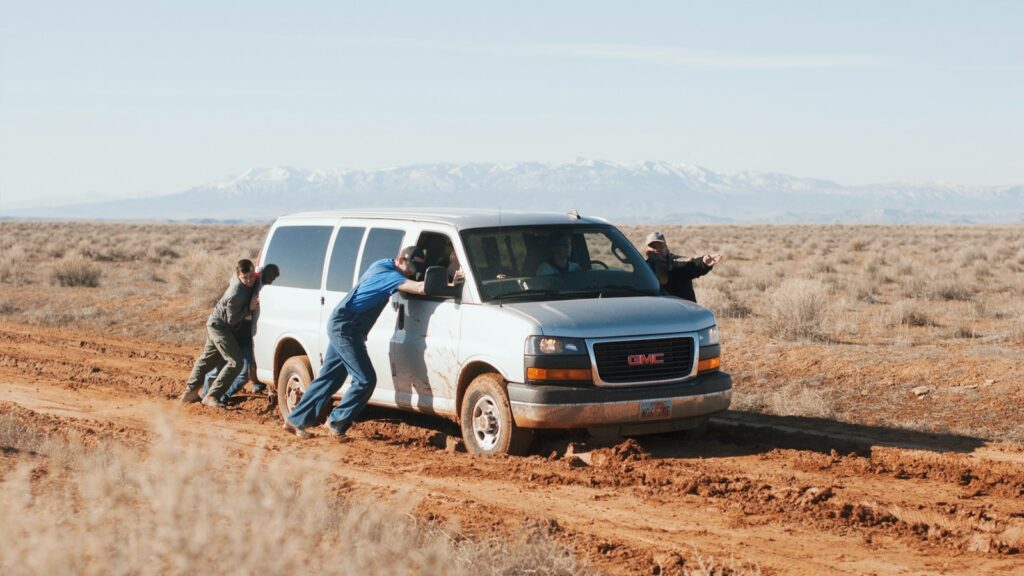“But I’ve already sent them on a leadership development programme. Why do we need team development?”
It’s a question we’ve heard more than once – and, on the surface, it’s a fair challenge. Leadership development is widely seen as the primary route to improving team performance: build better leaders, and the team will follow.
But in reality, that assumption doesn’t always hold true. Leadership programmes often focus on the individual. A typical curriculum might include self-awareness, feedback skills, holding 121s, managing performance, personal effectiveness, coaching, and influencing skills. While these are all valuable components, they’re often disconnected from the messy, relational and collective reality of both being in a team and working with other teams. ‘Well-led’ individuals don’t automatically make a high-functioning team.
What gets missed: How teams actually work together
Effective team functioning involves a different set of capabilities from both leaders and team members. For leaders, it’s not just about managing individuals, but about shaping how the team functions as a system. How confident do your managers and leaders feel with the following?
- Working with their team to collectively develop a strategy or plan,
- Debating priorities and agreeing what to pause or say no to,
- Surfacing and navigating disagreement or tension between team members,
- Enabling collective decisions that people can genuinely get behind,
- Facilitating inclusive, engaging and effective meetings,
- Creating space where people feel psychologically safe to speak up and share their perspectives.
And when we shift the focus to team members, how equipped do they feel around the following?
- Inviting colleagues to offer feedback on work in progress,
- Constructively challenging or disagreeing with each other without damaging relationships,
- Understanding and adapting to different working styles to collaborate more effectively,
- Sharing responsibility for team outcomes, rather than just individual tasks,
- Building trust with colleagues in a hybrid or remote environment.
Teams don’t operate in isolation: Why inter-team dynamics matter
Team effectiveness doesn’t stop at the team boundary. In fact, many of the thorniest issues show up not within teams but in the handovers and grey areas between teams. Some of the common challenges we see in our work include:
- Silos, duplication, and confusion over ownership: Two teams unknowingly working on the same thing or, worse still, no one owning a crucial piece of work.
- Competing priorities and clashing ways of working: One team moving fast and improvising, while another is detail-heavy and risk-averse.
- Poor handovers or unclear dependencies: Missed deadlines and frustration due to a lack of shared understanding about who needs what, and when.
- Over-reliance on informal relationships: Work gets done because certain people get on, not because there’s a reliable system in place.
- Lack of context sharing: Teams operate in bubbles, unaware of wider constraints, pressures, or strategic shifts.
- Escalation culture: Instead of peer-to-peer resolution, issues and tensions jump straight to leadership.
These kinds of dynamics can quietly drain performance, fuel resentment, and undermine even the best leadership efforts. And yet, they’re often treated as interpersonal issues or process gaps, rather than what they really are – systemic issues that need a different kind of development.
What high-functioning team development looks like
We spend nearly half of our 80,000 working hours in teams, yet how often do we invest in how those teams actually work?
When we do, the returns are huge. It isn’t just good for performance, it improves the whole system of work: how it feels, how it flows, and what becomes possible.
If we want teams to thrive, both internally and in collaboration with others, we need to create space for them to reflect, reset, and rewire how they work together. This isn’t about away days filled with abstract models or generic trust exercises. It’s about working on real stuff, in real time, using live team dynamics, current projects, and pressing challenges as the material for development.
There aren’t quick fixes or frameworks to copy and paste. The focus is on creating space for conversations that shift how people think, relate, and make decisions together.
Intra-team development: Strengthening the ‘We’ within
- Facilitated real-time reflection: Looking not just at what the team is working on, but how it’s working. What’s helping? What’s getting in the way?
- Clarifying team decision-making norms: Are we clear on when we aim for consensus vs. when someone decides? What does good enough look like?
- Exploring group dynamics and psychological safety: Surfacing what’s not being said, creating space for different voices, and noticing patterns around power, silence, or avoidance.
- Practising inclusive and effective meeting design: Helping the team notice who speaks, who doesn’t, how ideas are engaged with and ensuring equity of voice to tap into the collective intelligence of the team.
Inter-team development: Strengthening the ‘we’ across teams
- Joint sessions with neighbouring teams: Creating space to talk about points of friction, misalignment and unspoken assumptions/
- Mapping dependencies and tensions: Making the invisible visible: how does our work affect others? Where does it get stuck? This helps teams see not just immediate blockers, but broader patterns and ripple effects.
- Aligning priorities and rhythms: Finding light touch ways to coordinate across team boundaries, like shared planning sessions or alignment touchpoints.
- Building relational capital across silos: Encouraging peer-to-peer connections between teams, not just manager-to-manager relationships.
- Developing a shared language for collaboration: Helping teams agree on how they’ll raise issues, make requests, and negotiate tensions.
At the heart of all this is facilitation as a leadership act. Not just keeping meetings on track, but shaping the conditions for good thinking, honest conversation, and connected action. This kind of leadership isn’t about having all the answers – it’s about enabling the team (or teams) to do their best work together.
A broader lens on development
When examining your development offer, you shouldn’t just ask: ‘Are we building better leaders?’ You should consider: ‘Are we building the conditions for better outcomes for individuals, teams, and the organisation as a whole?’
Because if you invest as much in how teams interact, both within and between, as in developing individual leadership skills, you might just unlock sustainable performance within a high-functioning team.








